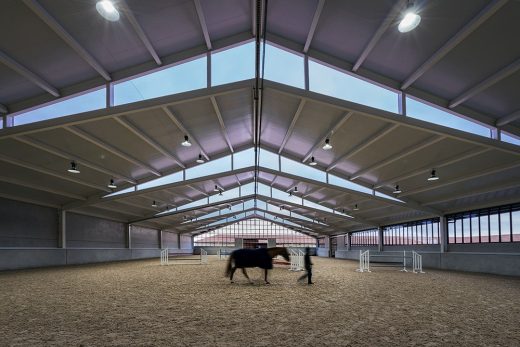Wood Panels Industry, Supply, Building, News, Design, Biomass, Fibre, Climate, Energy, CO2
Wood Panel Industry : Timber Supply Issues
Timber Industry Discussion by Alastair Kerr, Director General
29 Mar 2010
Adapting to a Changing Climate
Wood is plentiful, naturally renewable and ticks all the right boxes as far as CO2 sequestration and storage are concerned; so why then is wood fibre availability becoming the most pressing of issues now and into the foreseeable future for industrial wood processors such as the wood panel industry?
Fundamentally this is an issue that is directly related to climate change. Not in the sense that a changing climate will impact on species choice, forest pests or increase incidences of storm damage or forest fires; rather, the more immediate impact is that driven by policy change and the movement by most governments in the world to reduce dependency on fossil fuels in favour of renewable sources of energy.
Signs of increasing wood fibre supply stress have been present for a number of years. Austria is one country where energy taxes have been in place for over a decade and is held up by supporters of biomass fuelled energy production as being a model of how a renewable energy network should operate, with a high proportion of district, industrial and domestic heat or heat and power plant. Acknowledging the climate change imperatives, this example should be applauded, however, to meet the increased demand for wood an unintended consequence has been to create both shortages in certain regions and to drive up the primary raw material cost to established industries and in particular that of the wood panel industry, and this is in a country that has a higher percentage of forest cover than the UK.
The renewable energy business is still pretty immature in the UK but since the introduction of the Renewables Obligation (RO) in 2002 there have been a plethora of renewable energy projects coming on stream. The RO obligates electricity suppliers to supply an annually increasing percentage of electricity from renewable sources. Operating around a system of tradable green certificates, the RO provides electricity producers with an indirect subsidy which along with capital equipment support they can use to invest in renewable technologies. Although biomass covers a broad range of biodegradable material types, in the UK and Continental Europe, wood is the preferred fuel by the majority of dedicated biomass energy projects. Energy crop development in the UK is a fringe activity.
The drivers behind wood energy development are well understood; indeed the wood panel industry derives a significant proportion of its heat energy requirement by burning its own process derived residues. The real issue centres of the subsidy regime available to generators which is distorting wood fibre flows, creating shortages and driving up cost which if left unchecked, will undermine the competitiveness of established wood users.
According to the official statistics back in 2000, wood fibre availability in the UK was projected to be more than plentiful up to at least the year 2020. Since 2000 however there has been a series of statistical refinements which has subsequently reduced the forecast availability. A study funded by the DTI in 2005 on the impact of the Renewables Obligation on the wood panel industry, flagged up that there could under certain scenarios be a supply demand imbalance, a fact that was more accurately expressed in an industry funded study ‘Forecast wood fibre availability and demand in Scotland and Northern England to 2016′ (John Clegg Consulting & Cawdor Forestry – 2006). WRAP (Waste resource Action Programme has also just published downgraded statistics on the wood that currently goes to landfill.
The effect of this downgrading of fibre availability is to raise questions as to whether governments’ aspirations for biomass energy production can be realised with the resource available or will it be achieved at the expense of established wood using industries.
The short term mitigation for wood using industries is to promote a policy of resource enlargement, and by this I mean not just afforestation (a process which is not immediate) but to focus Government support to bring to market that material which has until now been less economic, whether that be in the form of forest brash or the dirtier fractions from the waste stream.
The challenge for existing industries is to maintain both production and competitiveness in a world where wood fibre availability will be increasingly under pressure. New product development is already underway. There is a trend with some product types to look at ‘light weighting’ whether in the form of lower density solid boards or composite panels with honeycomb or foam cores. Extending the in service life of wood products will be important and there is likely to be greater emphasis on using alternative fibre types in combination with wood.
The wood panel industry is in the firing line today but looking further ahead all wood using industries are likely to be challenged to one degree or another.
Alastair Kerr, Director General
Wood Panel Industries Federation
Wood Panel article from the Wood Panel Industries Federation, UK
Architectural Articles
Performance Architecture : Architecture Discussion by Brian Carter. 9 Mar 2010
Luminous Ceiling Lighting : article by Thomas Schielke. 4 Mar 2010
Architectural Narrative : article by Trevor Tucker. 2 Mar 2010
Sustainable Design : article by Trevor Tucker. 18 Aug 2009
Website: Architecture Walking Tours
Sustainable Architecture Design : article by Trevor Tucker. 18 Aug 2009
Design: OOIIO Architecture

images : OOIIO Architecture, Josefotoinmo
Horse Riding Field in Cattle Farm
Comments / photos for the Wood Panel Architecture page welcome





